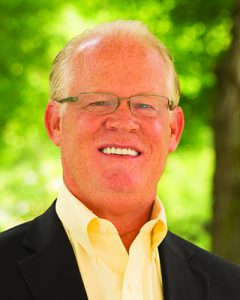Mass. unveils new solar incentive program: Solar Massachusetts Renewable Target program - by Craig Huntley
Since the inception of the Solar Carve Out Program in 2010, solar energy has flourished in Massachusetts. This program, which centered around Solar Renewable Energy Certificates (SRECs), also known as the SREC-I program, proved to be exceedingly effective, meeting its cap of 400 MW of solar development ahead of schedule in 2013. Its successor, SCREC-II, was equally effective and hit its 1600 MW cap in April 2016, three years earlier than anticipated.
Instead of introducing another version of the SREC program, the Massachusetts Department of Energy Resources (DOER) opted for a temporary extension of SREC-II while they developed the next generation solar incentive program. The DOER’s first draft, or “straw proposal”, of an entirely revamped solar incentive program was unveiled last September, and since then the industry and hundreds of potential solar adopters have been eagerly anticipating the DOER’s next move and finalization of the new program.
Massachusetts Solar Gets SMART
On January 31 the DOER announced the official successor to the SREC-II solar incentive program, the Solar Massachusetts Renewable Target (SMART) program. As expected, the program is very similar to their previously released straw proposal, with a few key differences.
The SMART program is structured quite differently than its predecessors as it marks the retirement of SRECs, shifting the incentives to a declining block tariff program that is designed to provide more long-term stability than the market driven certificates.
In contrast to the Solar Carve Out program and SRECs, the SMART program has several specific objectives, which are designed to help the solar energy market evolve. The objectives of the SMART program are to expand direct ownership of solar systems by building owners; to encourage coupled solar and energy storage solutions; to set uniform compensation rates across Massachusetts with more precision and long-term visibility; and to reduce the state/ratepayer burden of subsidizing solar systems.
The basic features of the SMART program are:
• 1,600 MW AC declining block program;
• Applies to all electric distribution companies;
• Same compensation rates across the state;
• 10 or 20-year fixed price term depending on project capacity (10-year for small, 20-year for large);
• Compensation structure differentiated between sized-to-load and standalone systems;
• Base compensation rates set according to project size;
• “Adders” based on location, and those that provide unique benefits, including community solar, low-income, public, and energy storage projects;
• Base compensation rates decline by set%ages in each block following Block 1; and
• Maximum project size of 5MW per parcel.
The allowance of 1,600 MW over eight 200 MW blocks provides incentive stability for the foreseeable future, promising guaranteed support for a 10-20-year period for arrays built under the program. The inclusion of an incentive “adder” for systems paired with on-site storage solutions is also a step forward, since arrays that are coupled with energy storage provide a more resilient grid, and greater energy independence for the owners of the system. Meanwhile, providing incentive adders for community solar and low-income projects will allow installations to expand into new areas, encouraging a more diverse marketplace than before.
While the SMART program is nearly final, there are some major details to be worked through before the program is ready to be put into effect. The DOER’s next step towards implementing the SMART program will be establishing compensation rates and selecting the solar program administrator in August. In the meantime, the DOER will file an emergency regulation with a public hearing and comment period in March, with the final regulation to be made in May. Once these steps are completed the SMART program will go into full effect by January 2018.
Now, with the SMART program’s final regulation expected in May, SREC-II has been extended a final time to bridge the gap until SMART is implemented in January of 2018. This extension will come with further reduced SREC factors, but will ensure a smooth transition between programs, enabling the solar industry to continue working and prepare for the start of the SMART program next year.
For full program details, please refer to DOER’s presentation of the SMART program here: http://www.mass.gov/eea/docs/doer/rps-aps/final-program-design-1-31-17.pdf.
Craig Huntley is co-founder and chief development officer at Solect Energy, Hopkinton, Mass.






